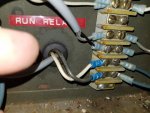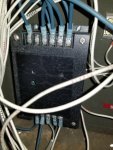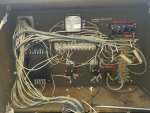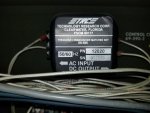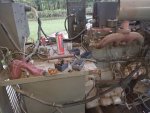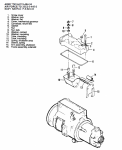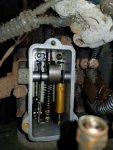Well, I found the short - sort of. It's the panel lights. Turn them off and the short goes away. This thing sucks to trace wires on. They're all the same color (or damn near anyway). I must have cut 100 tie wraps off and pulled 5' of wire loom loose. To top it off, the guys who re-did this thing cut wires everywhere and spliced in different color wires in the middle of nowhere. Anyway, was able to trace the short to the panel lights but didn't go any further trying to locate that problem... just turned off the panel light switch. Will trace it down all the way later.
The other problem is that it won't even bump the starter. I'm not totally sure yet exactly how the starter is wired up but I think it all goes back to one of 2 solid state boards that were added. I traced the starter solenoid wire back into the instrument panel and to what's labeled as "starter relay". Which makes sense. The coil activation wire for that relay goes back to this solid state board... so does at least one wire from the Off/ Auto / Manual toggle. Also, 2 wires to one of the barrier strips were cut about a foot outside the control panel. I traced the wires on the opposite side of the strip from the cut wire and it also goes back to the same solid state board. I'm pretty sure that the cut wires were shore power for the sense function /auto start and that this board controls all that. That's why the wires were cut - when they pulled it out they had to cut it loose from the building. I gotta get some wire labels before I take that board out for inspection and to try to determine who made it, etc.
Question: Should I be able to short 24 volts from the + connection from the battery at the starter to the "start lug" of the starter solenoid and at least make sure the solenoid and starter work???
The bottom black and white wires in this pic are the ones that were cut just outside the back of the control panel. The blue wires run over to the solid state board.
View attachment 847863
This is the board that seems to control start and shore power sense functions. I traced 24V supply to one of the top lugs. The shore power hot to another and the Off/Manual/Auto toggle to another.
View attachment 847864
View attachment 847865



